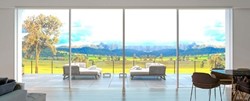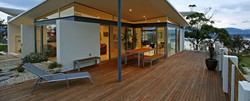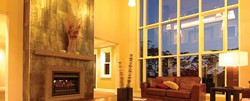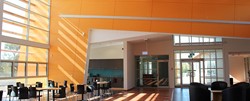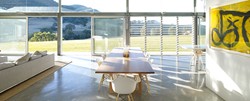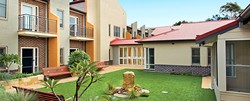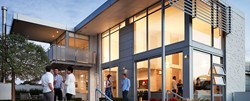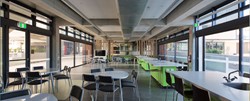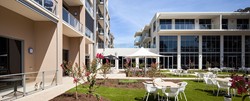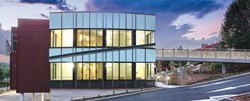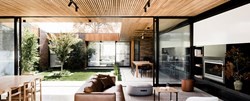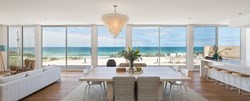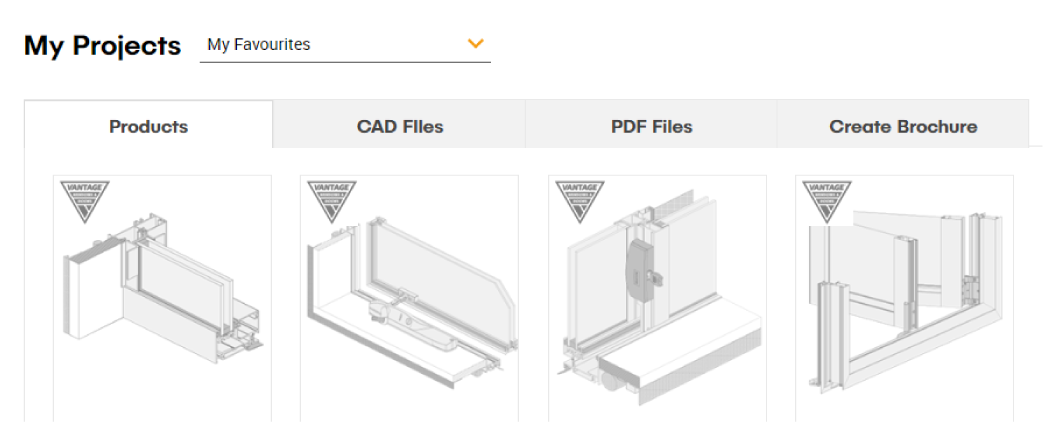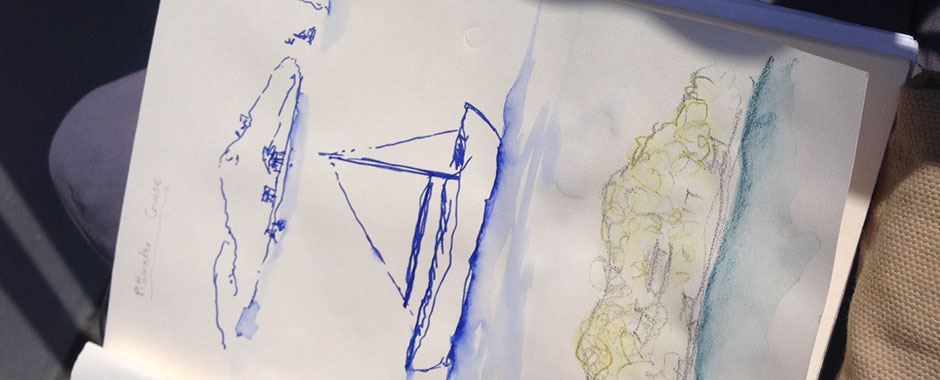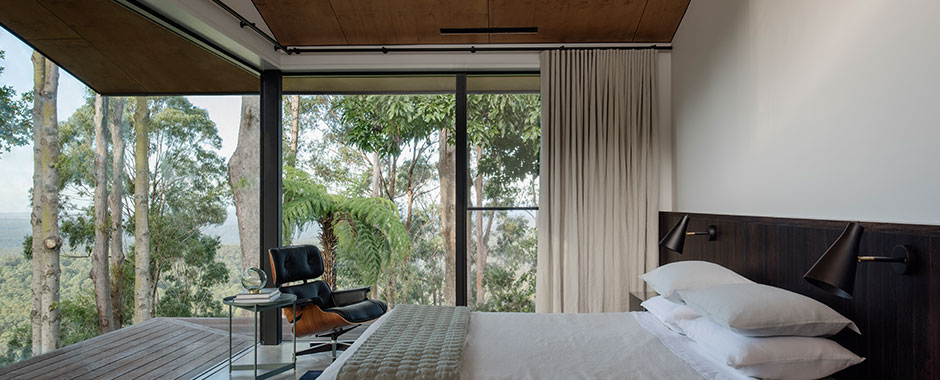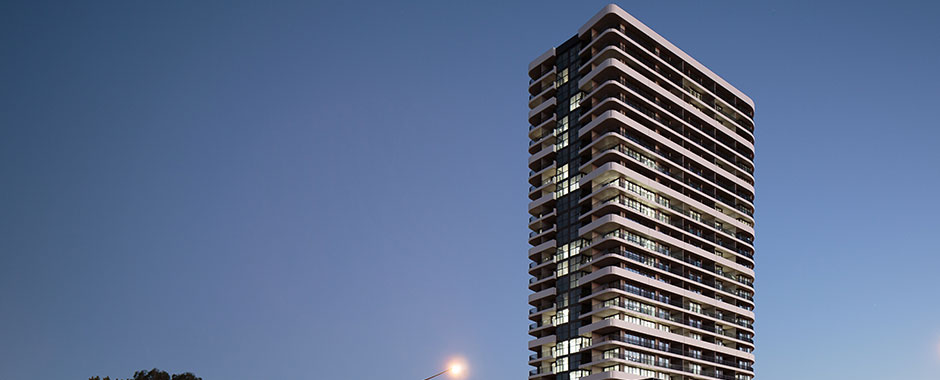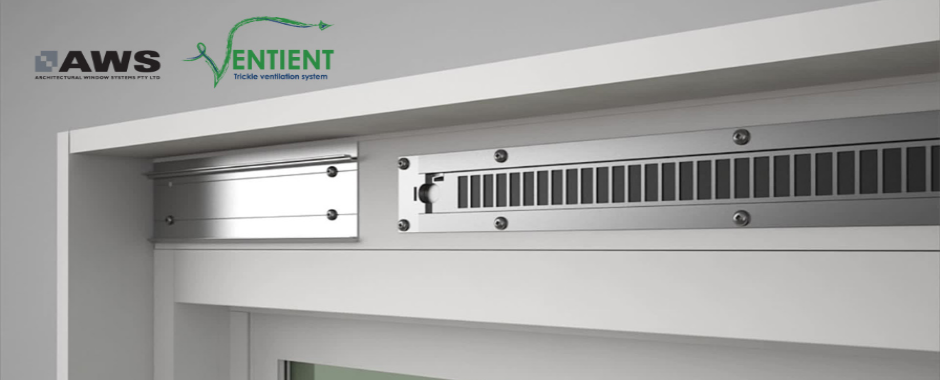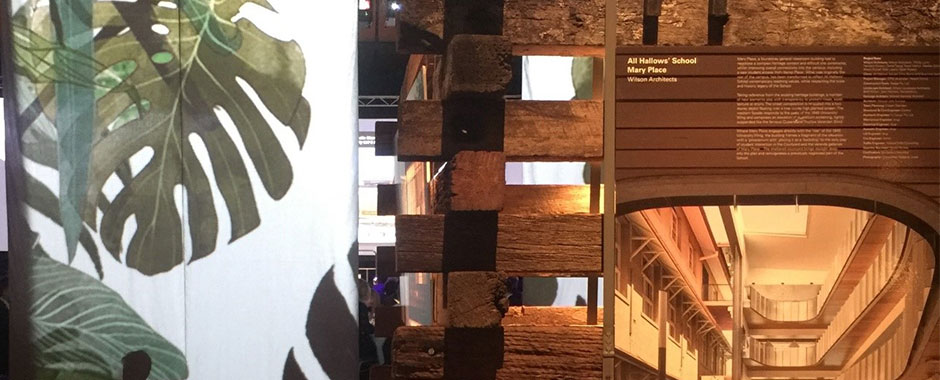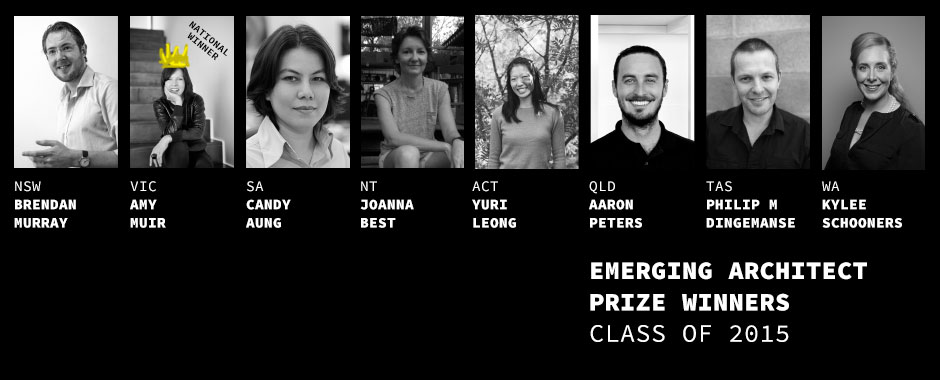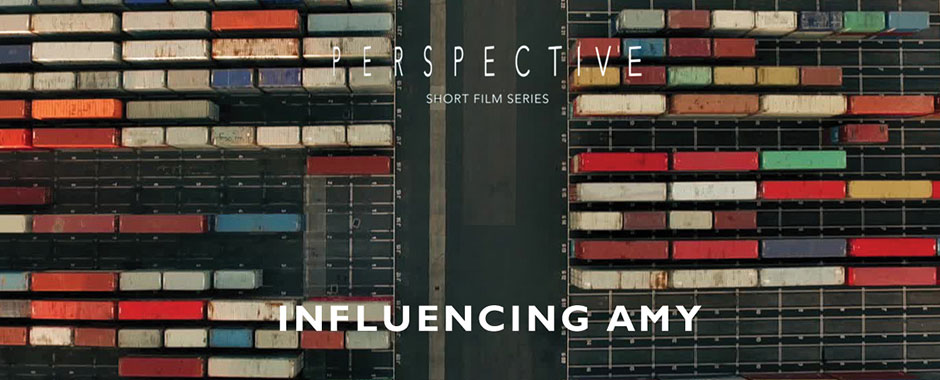Student Architect, Sahibajot Kaur, attended the 2016 Total Immersion Student Architecture Summer School by Ozetecture, from the 14th to the 20th of February
---
Architecture is often confused with building. So I realised, after spending seven days with two of Australia’s national gems.
Building shelters life; architecture inspires life. I couldn’t help but agree in totality to this notion put forward by Richard Leplastrier and Peter Stutchbury after dinner on the very first night, as we sat in the summer air – 32 of us – starry-eyed and wonderstruck to be in the presence of such influential yet humble cultural creatives.
The youth hostel held us snug in its verandah, floating on timber stilts upon a terraced landscape that stepped down to the water’s edge on one side, and up to a ridge on the other, only to plateau for a short while and then step back down to the water again. Nestled into this headland, we shared laughs, visions and stories, gazing at the stars, land and water beyond.
We had spent the afternoon ‘on the Pittwater’, getting to know the context of the place we were to spend the rest of the week. Our eyes soaked in unending views of land and sea, and the meeting of the two at sandy shorelines and eroded rock-faces, while our skin absorbed the unrelenting, yet empowering sunshine that made the day as spectacular as it was. Our pens were busy trying to capture what we observed - the yachts, jetties and structures that speckled the landscape.
“Architecture is not about fancy academic constructs; it is about wellbeing.” A sensation of calm and ease swept over me. These ideas made me feel right at home. They embodied the values I felt most strongly about, and showed me that Architecture could be – and should be – a vehicle to carry these ideals forth. I still remember thinking, “this is what I want to do”.
There was immense comfort within that moment, knowing that ideals and skill – the metaphysical and the physical – could be married. Going through university, it was almost always about being the ‘best’ – or so it seemed. I could never wrap my head around the notion of ‘best’. What did it mean, and in a space as subjective as design, who defined it? But here and now – slung between the earth and the sky – I realised that if Architecture is about improving lives and about wellbeing, then there is no question of ‘competition’.
Every piece of land possesses its own unique characteristics, and hence, calls for its own unique construction methods and spatial qualities. We looked out at all the houses that sat on the edges of the bay. As Peter explained the immense differences between two of his works which were situated only 2km away from each other, his concern about the growing ‘international style’ of Architecture began to make sense. Why is it that all our architecture is starting to look the same? Why should architecture be detached from place?
---
“Draw.” That was our instruction on how to start each day at Camp. “Go down to Woody Point before the sun rises, and draw”. To our surprise, Woody Point – with its cathedral of trees and filtered view out over the bay – gave us new drawings every day. Charcoal very quickly became my favourite drawing medium. Drawing reveals things that we miss when we simply look - it helps us read the landscape. And without reading the landscape, how can we possibly respond to it?
Our elders had their own ways of reading the landscape. They knew it like the back of their hand. And spending just a week trekking through the bush, canoeing on the water, drawing with tree-bark, talking about the land and the way our elders navigated it, and working with each other to draw, design and construct ideas under the sun, analysing our site in the flesh and not on a screen, made me feel more connected to the land than ever before. It made me wonder why, in my three years of architectural education, I had never done this before – why, in my three years of architectural education, I had never been challenged to consider what it means to be truly ‘sustainable’ and how Architecture can help humanity.
Humanity - that's what Architecture should be about, and that's what this camp made me realise. There are social issues that need to be solved, and our Architecture must not shy away from providing parts of the answers.
---
Forget shiny materials and fancy forms. Forget about trying to build the world’s tallest towers and most luxurious resorts. Forget about competing to be the best. Let's all revel in each other’s design excellence and brilliance and work together to work with, and respect, the land and its people, and see, not how much, but how little can live with. Like nature so eloquently and beautifully takes care of us all and sustains itself with its ingenious forms and seamless systems, let's make architecture and not just buildings.
Written by: Sahibajot Kaur of Plus Architecture (New South Wales Event Correspondent for AWS)
Sahibajot Kaur is a Graduate Architect at Plus Architecture, who recently graduated from the Bachelor of Design in Architecture from the University of Sydney. As a big believer in the values of humanitarianism, she is interested in site-responsive, socially-uplifting and sustainable architecture. She is constantly questioning what is means ‘to live’, and how architecture can truly help people while being as simple as possible. Sahibajot currently blogs about her learning and ideas, and envisions herself as an advocate of responsible, sensitive and passive design in practice and in dialogue.

